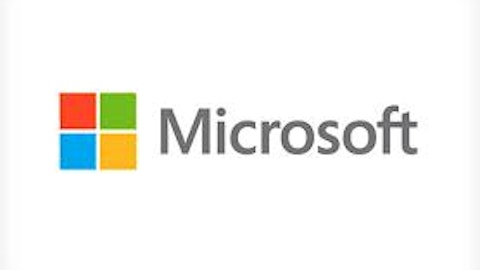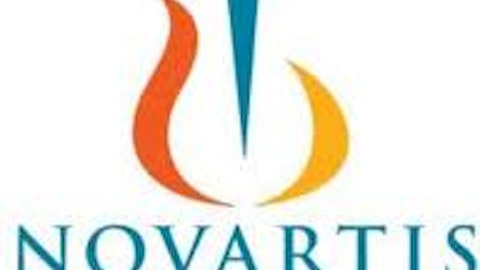Designed as a way to bring potentially life-changing drugs to pharmacy shelves faster than ever, the Food and Drug Administration Safety and Innovation Act, which passed last year, came with a clause allowing the FDA to place a special designation, known as “breakthrough therapy,” on clinical-stage drugs.

Source: Food and Drug Administration, Wikimedia Commons.
For a drug to be classified as a breakthrough therapy, it has to “treat a serious or life-threatening condition, and [have] preliminary clinical evidence [indicating] that the drug [or combination of drugs] may demonstrate substantial improvement over existing therapies on one or more clinically significant endpoints.” Naturally, this phrase leaves a little bit to interpretation, and not all biotech companies have had success in getting the FDA to label their experimental drug or combo as a breakthrough therapy.
Since the inception of the breakthrough therapy designation through August 23, 2013, the FDA received 82 requests for a breakthrough therapy designation review and granted only 25 breakthrough designations. An additional 25 applications are still under review, with 32 reviews being denied the breakthrough designation.
The breakdown of the breakthrough designation
As you might expect, cancer treatments account for roughly half of all breakthrough therapy designations, but the diversity among the companies producing these potentially game-changing drugs is encouraging. Following are the designations that the FDA has issued through early July.
| Drug name | Company | Treatment designation |
|---|---|---|
| Kalydeco & Kalydeco with VX-809 | Vertex Pharmaceuticals | Both for cystic fibrosis |
| ibrutinib | Pharmacyclics, Inc. (NASDAQ:PCYC) | Mantle cell lymphoma; chronic lymphocytic leukemia; small lymphocytic lymphoma; Waldenstrom’s macroglobulinemia. |
| LDK378 | Novartis AG (ADR) (NYSE:NVS) | Anaplastic lymphoma kinase-positive metastatic non-small cell lung cancer |
| palbociclib | Pfizer Inc. (NYSE:PFE) | Metastatic breast cancer |
| lambrolizumab | Merck | Advanced melanoma |
| Hep-C combo daclatasvir, asunaprevir, and BMS-791325 | Bristol-Myers Squibb | Chronic hepatitis-C virus |
| SD-101 | Scioderm | Epidermolysis Bullosa |
| daratamumab | Genmab/ Johnson & Johnson (NYSE:JNJ) | Double refractory multiple myeloma |
| Hep-C combo ABT-450/r, ABT-267, and ABT-333 | AbbVie Inc (NYSE:ABBV) | Chronic hepatitis-C virus |
| obinutuzumab | Roche | Chronic lymphocytic leukemia |
| sebelipase alfa | Synageva BioPharma | Early onset lysosomal acid lipase deficiency |
| asfotase alfa | Alexion Pharmaceuticals | Perinatal-, infantile-, and juvenile-onset hypophosphatasia |
| serelaxin | Novartis | Acute heart failure |
| drisapersen | GlaxoSmithKline | Duchenne muscular dystrophy |
Source: Individual company press releases.
Everyone’s a winner
As you can see there’s a lot of diversity here. The real winner of FDASIA’s passing, of course, are the patients afflicted by these chronic diseases who are likely to benefit from a swifter approval process. But, ultimately we’re going to see quite a few of these companies benefit as well – with the assumption that every drug listed here is approved which is probably a utopic expectation.
One of the more obvious beneficiaries of the breakthrough designation is Pharmacyclics, Inc. (NASDAQ:PCYC) which just this week had ibrutinib accepted for priority review by the FDA. Ibrutinib absolutely wowed researchers and investors in a mid-stage chronic lymphocytic leukemia study in which a complete or partial response was demonstrated in 71% of patients – the highest such response ever recorded in a clinical-stage CLL trial.
AbbVie Inc (NYSE:ABBV)’s direct-acting antiviral drug combo is another big highlight even though it’s currently going through late-stage clinical trials and isn’t likely to file for a NDA until next year. AbbVie’s combo was effective in delivering a sustained virologic response (i.e., no detectable level of the hepatitis-C virus) after 12 weeks in 97% of a 79-patient study in mid-stage trials. That’s a phenomenal success rate for an oral hep-c drug and will almost assuredly make intravenous treatments obsolete.
Two companies that will benefit the most
Despite the variety of designations seen above, two companies are more deeply engrained than their peers because of the breakthrough therapy designation and could be poised for gigantic gains.
Johnson & Johnson is one such company being the licensing partner for Pharmacylics’ ibrutinib and also for Genmab’s daratumumab which is a human CD38 monoclonal antibody currently in mid-stage development for the treatment of double-refractory multiple myeloma. With ibrutinib’s peak sales estimates of $5 billion and daratumumab’s peak sales estimate of $750 million, Johnson & Johnson (NYSE:JNJ) could be staring down some monstrous pipeline gains in the coming years.





